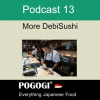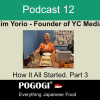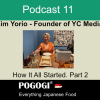Salmon (sake/shake)

Originally, salmon were only found in the cold waters of the northern hemisphere. With the advent of salmon farms however, salmon can now be found in the southern hemisphere. The history of salmon in Japan is extensive, going back to the times of the Ainu (the aboriginal inhabitants of Japan's northern island of Hokkaido who believed their gods morphed into salmon).
Young salmon will live for three to six years in the sea before swimming upstream, returning to their birthplace to spawn and die. Newly hatched salmon will then return to the sea to live until they are mature enough to continue their unique cycle of life."Sake" or "Salmon Dog" is the most common type of salmon in Japan, along with "silver salmon" and "red salmon." The meat of these salmon are bright orange with a rich, buttery texture.
The health benefits of salmon cannot be underestimated. Not only is it an excellent source of protein, but it also contains "healthy" fats like EPA which helps to clean the blood, and DHA, which is beneficial to human brain cells. If that's not enough, salmon is also high in vitamin A, which is excellent for your skin. Please understand the different grades that are given to Salmon.
In Japan, virtually every part of the salmon is eaten, including ikura (salmon roe) and sujiko (salted ovary).





